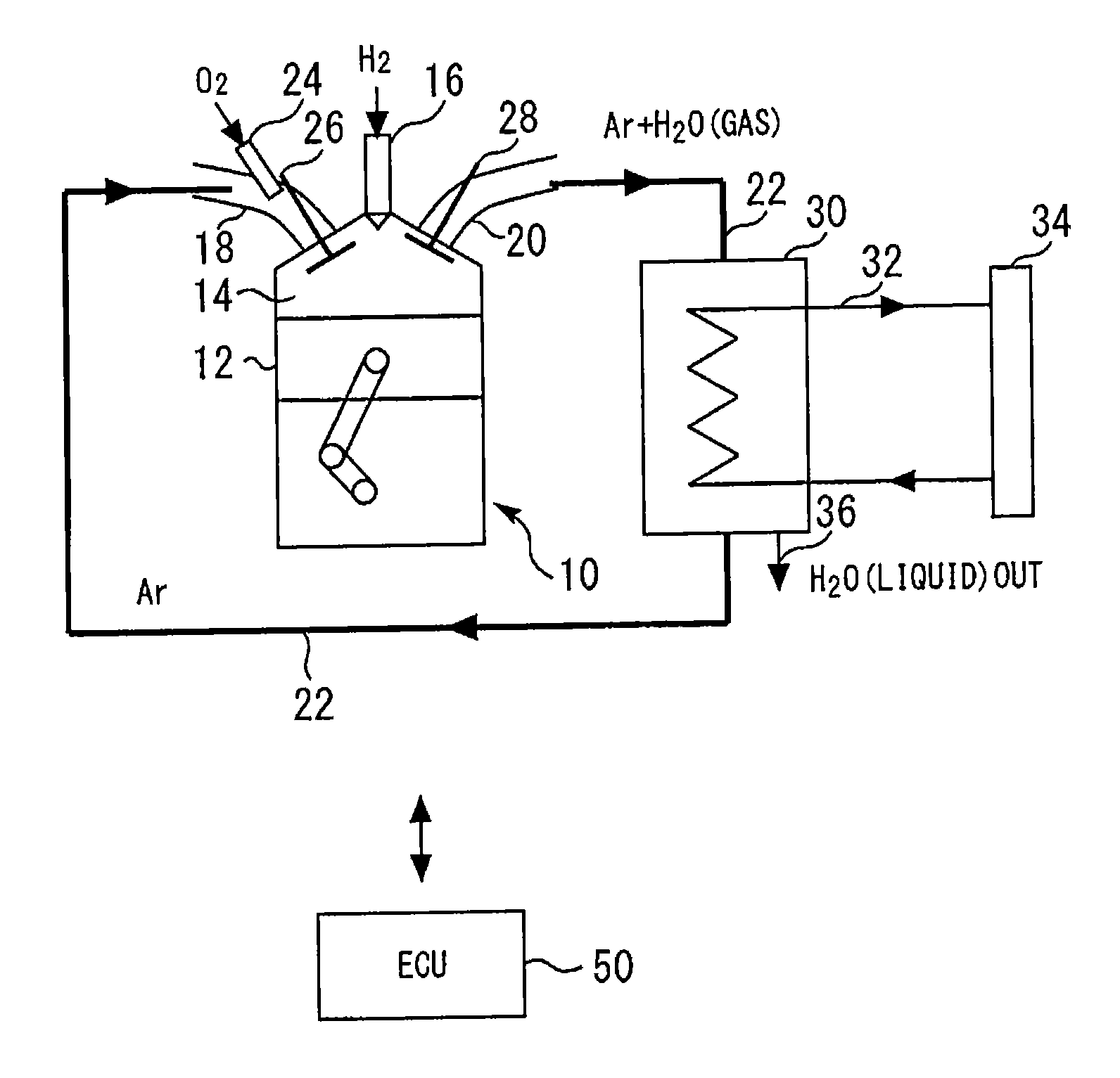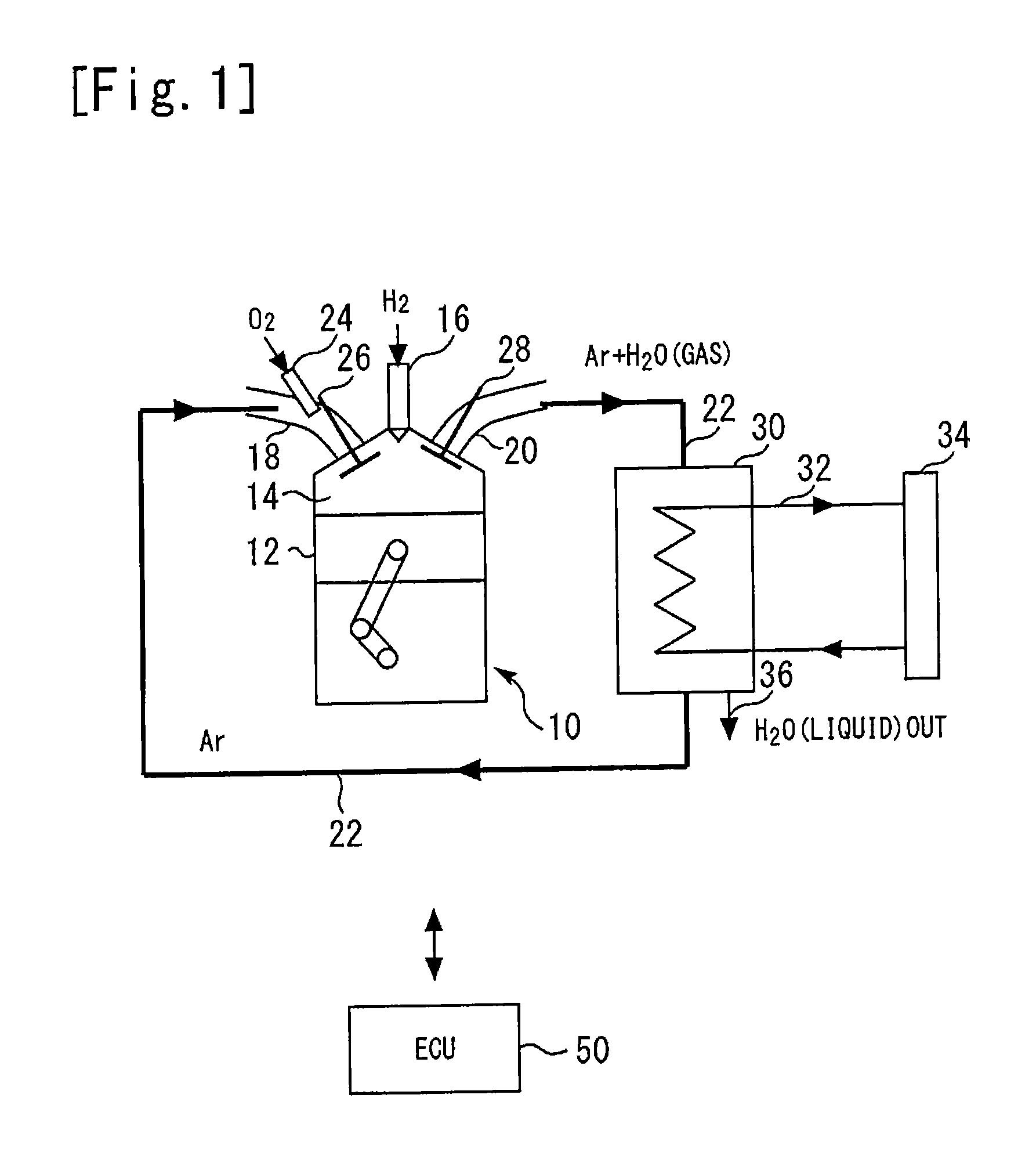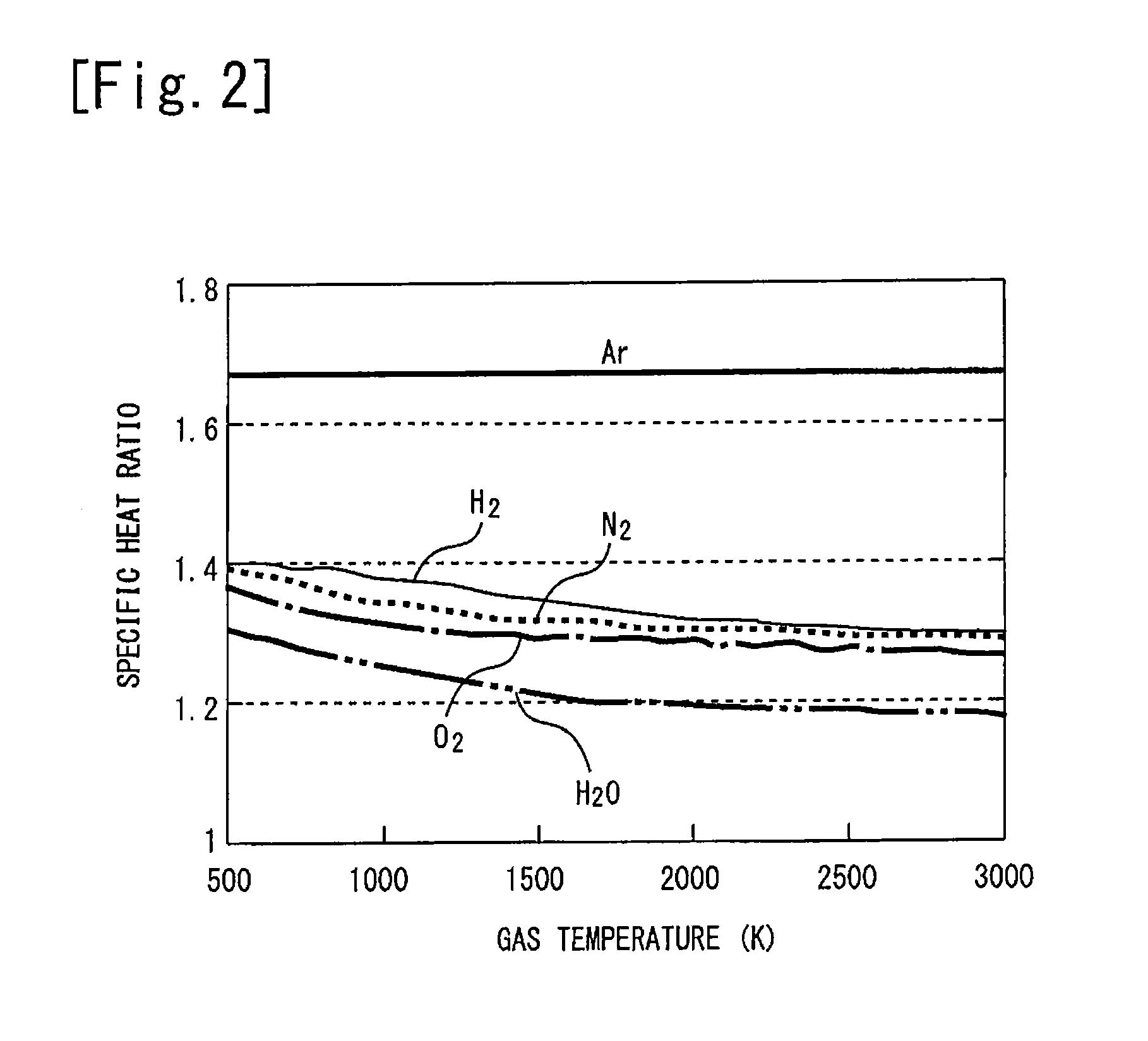Working gas circulation type engine
- Summary
- Abstract
- Description
- Claims
- Application Information
AI Technical Summary
Benefits of technology
Problems solved by technology
Method used
Image
Examples
embodiment 1
Feature of Embodiment 1
[0093]In the present embodiment, a working gas is filled in the combustion chamber 14, the intake port 18, the exhaust port 20 and the connection passage 22. A flow of the working gas will be described in combination with operations of the piston 12, the intake valve 26 and the exhaust valve 28. The working gas in the intake port 18 flows into the combustion chamber 14 in conjunction with a descend of the piston 12 while the inlet port of the combustion chamber 14 is opened (namely, during valve opening of the intake valve 26) (an intake stroke). In the intake stroke, O2 from the oxygen injector 24 also flows into the combustion chamber 14, in addition to the working gas. The piston 12 ascends after reaching a bottom dead center thereof. Thereupon, the working gas and 02 that flow into the combustion chamber 14 are compressed with the working gas which is already filled in the combustion chamber 14 (a compression stroke). Thereafter, H2 is injected from the hy...
embodiment 2
Feature of Embodiment 2
[0108]FIG. 6 is a diagram for describing a feature part of embodiment 2. As shown in FIG. 6, the intake port 18 branches at an upstream side of the combustion chamber 14. More specifically, the intake port 18 is configured by an intake port 18a branching to an inlet port 14a side of the combustion chamber 14, and an intake port 18b branching to an inlet port 14b side of the combustion chamber. Further, a demarcation passage 19a that partially demarcates parts of the intake ports 18a and 18b is formed halfway between the intake ports 18a and 18b. The demarcation passage 19a is provided with the oxygen injector 24.
[0109]In the present embodiment, the intake port 18 is configured as described above, and therefore, a working gas channel and an O2 channel in the intake port 18 can be configured separately. Namely, the working gas can be caused to flow into the intake ports 18a and 18b and O2 from the oxygen injector 24 can be caused to flow into the demarcation pas...
embodiment 3
Feature of Embodiment 3
[0112]FIG. 7 is a diagram for describing a feature part of embodiment 3. As shown in FIG. 7, the intake port 18 is configured by the intake port 18a branching to the inlet port 14a side, and the intake port 18b branching to the inlet port 14b side. The intake port 18b is a so-called helical port that is formed into a helical shape so as to generate a swirl flow in the combustion chamber 14. In contrast with this, the intake port 18a is a so-called straight port. The intake port 18a is provided with the oxygen injector 24.
[0113]The working gas that flows in the connection passage 22 flows into the combustion chamber 14 via the intake ports 18a and 18b. Note that since in the present embodiment, the intake port 18b is configured by a helical port, the working gas passing through the intake port 18b forms a swirl flow to flow into the combustion chamber 14, and forms an outer layer with a high working gas concentration along the wall surface thereof. Meanwhile, a...
PUM
 Login to View More
Login to View More Abstract
Description
Claims
Application Information
 Login to View More
Login to View More - R&D
- Intellectual Property
- Life Sciences
- Materials
- Tech Scout
- Unparalleled Data Quality
- Higher Quality Content
- 60% Fewer Hallucinations
Browse by: Latest US Patents, China's latest patents, Technical Efficacy Thesaurus, Application Domain, Technology Topic, Popular Technical Reports.
© 2025 PatSnap. All rights reserved.Legal|Privacy policy|Modern Slavery Act Transparency Statement|Sitemap|About US| Contact US: help@patsnap.com



